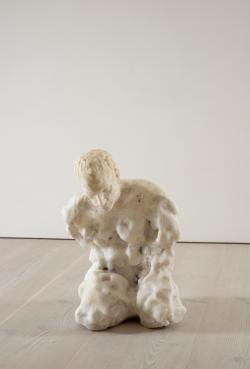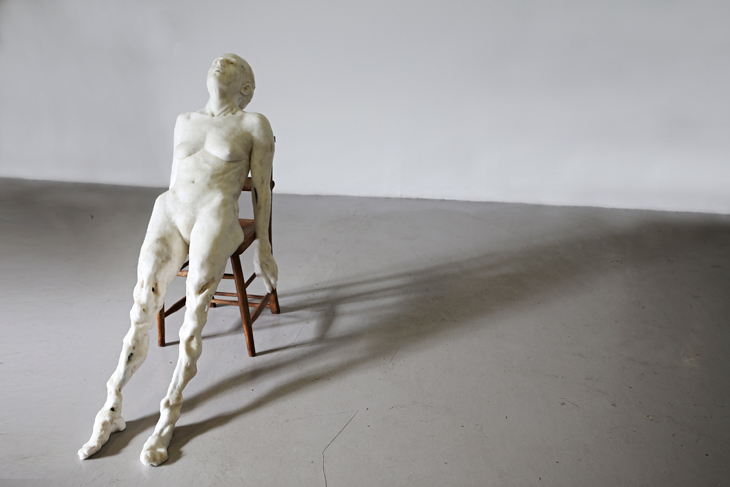


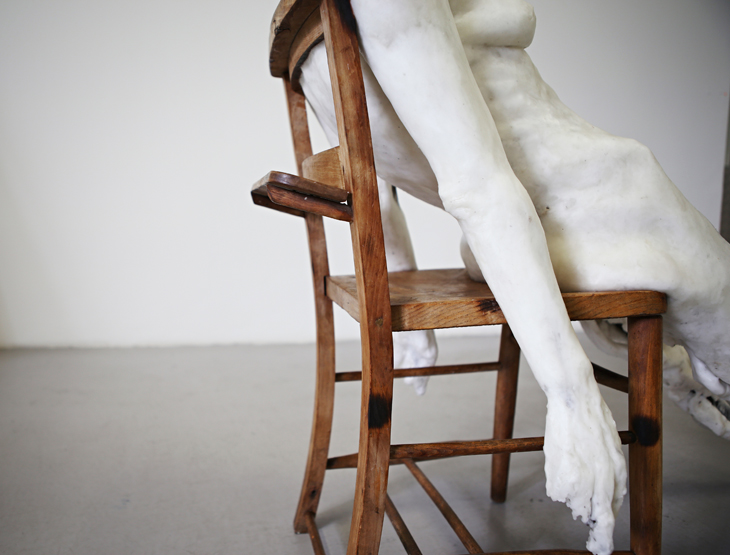
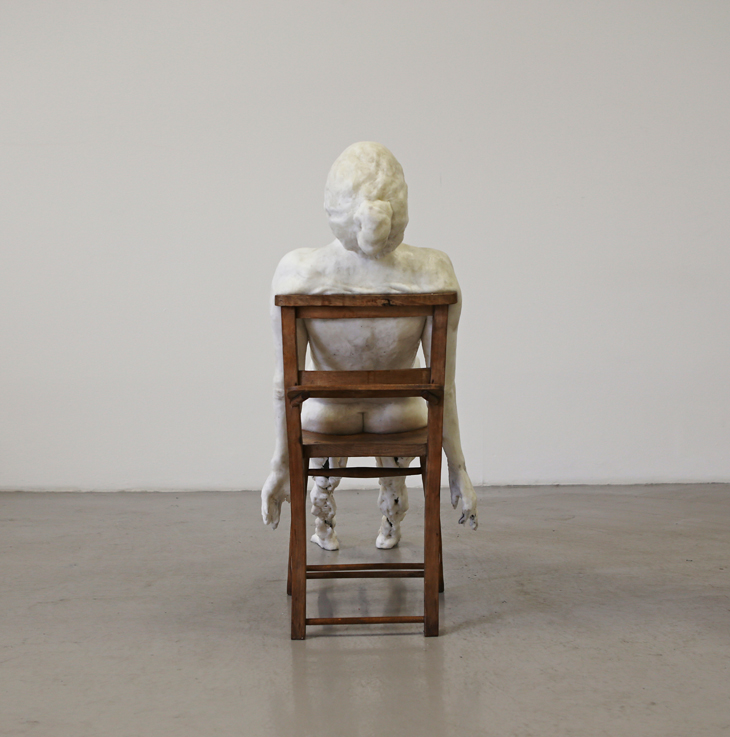
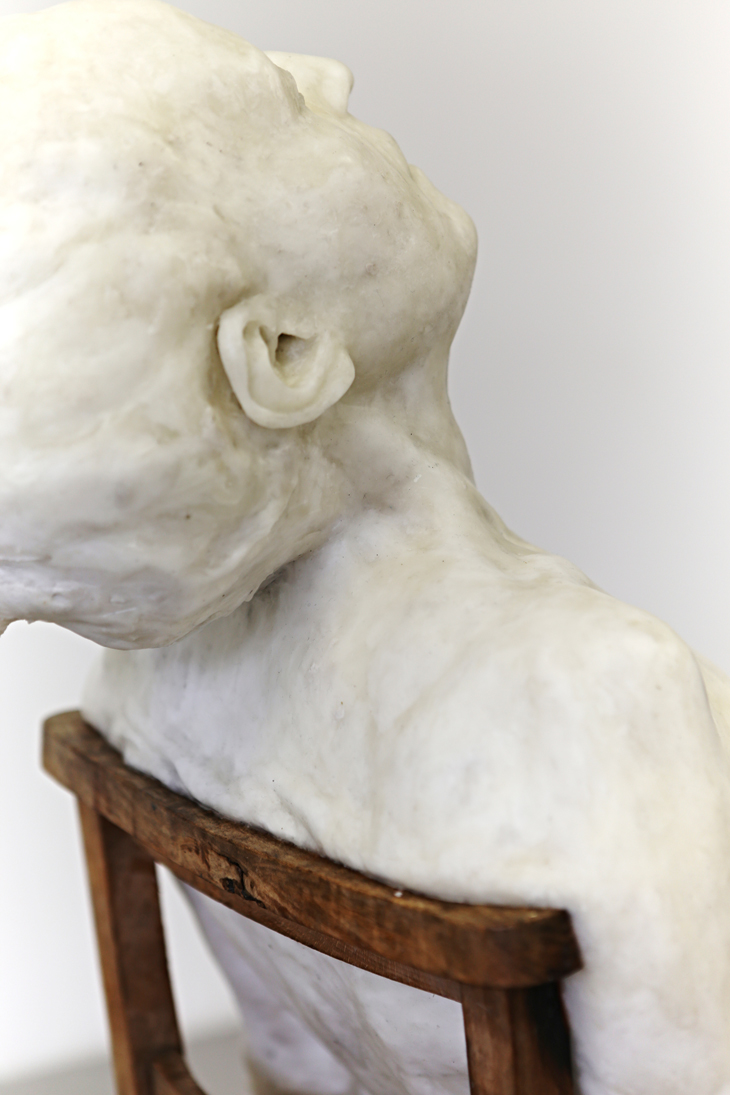
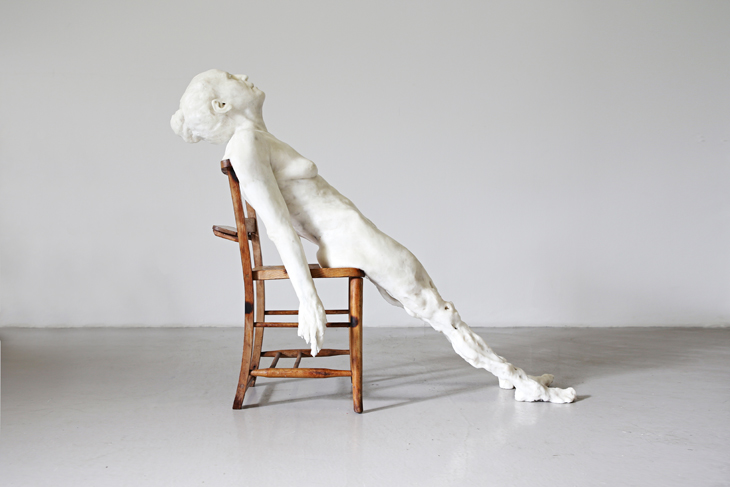
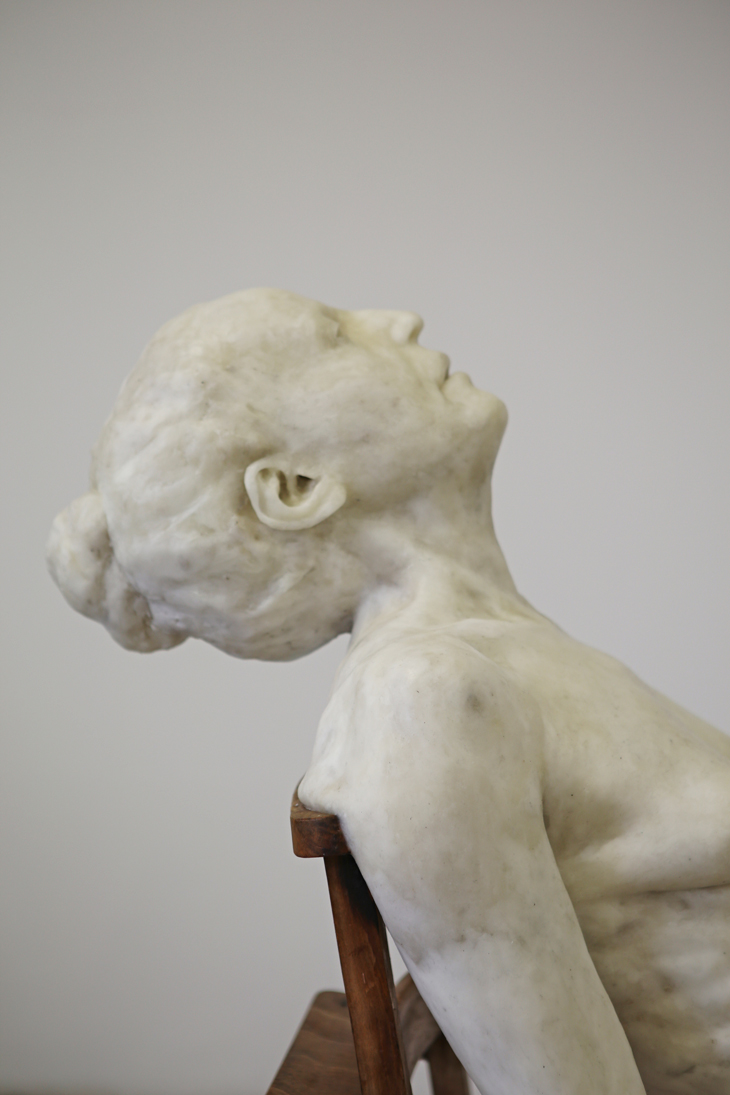
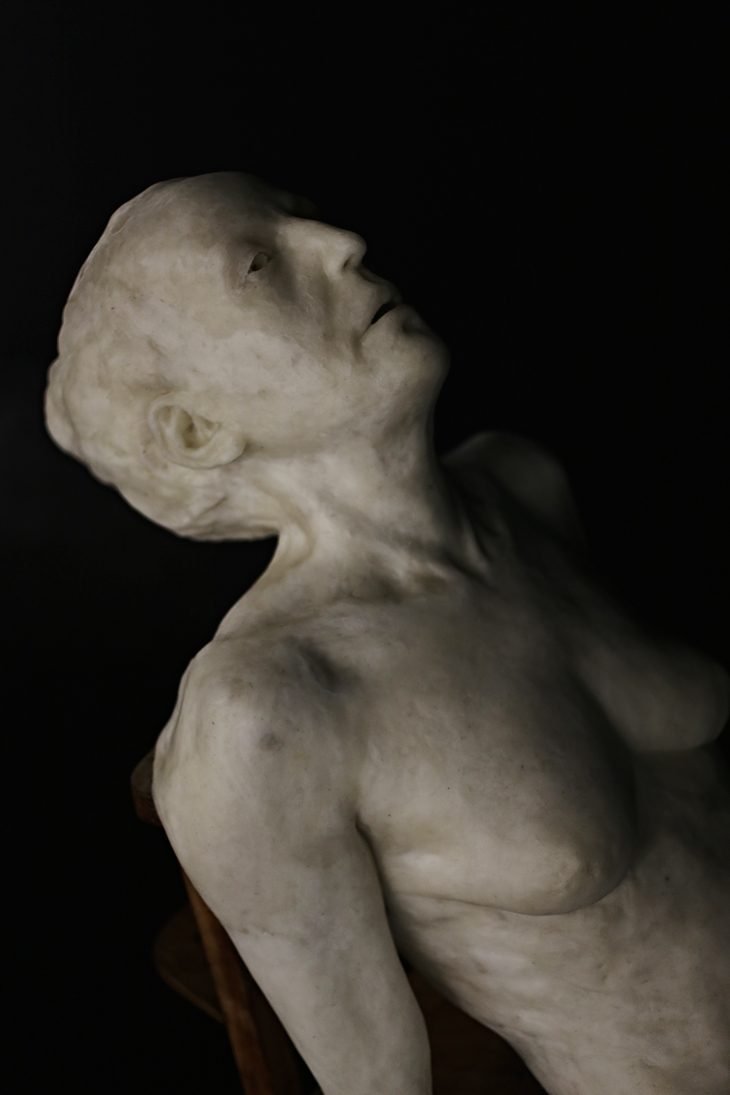

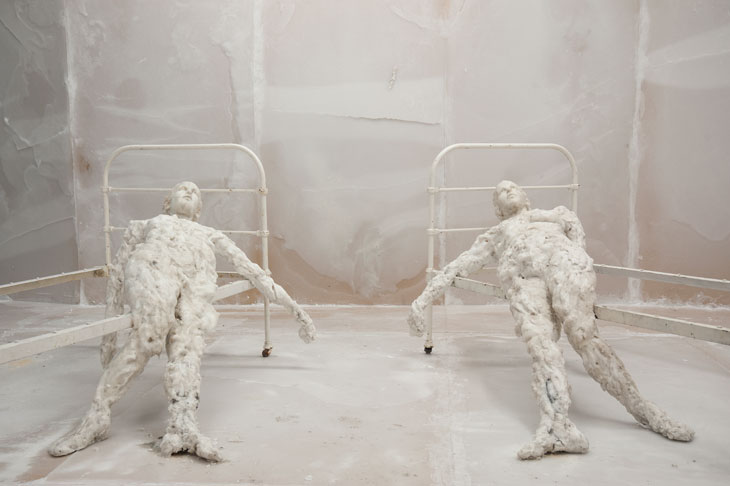
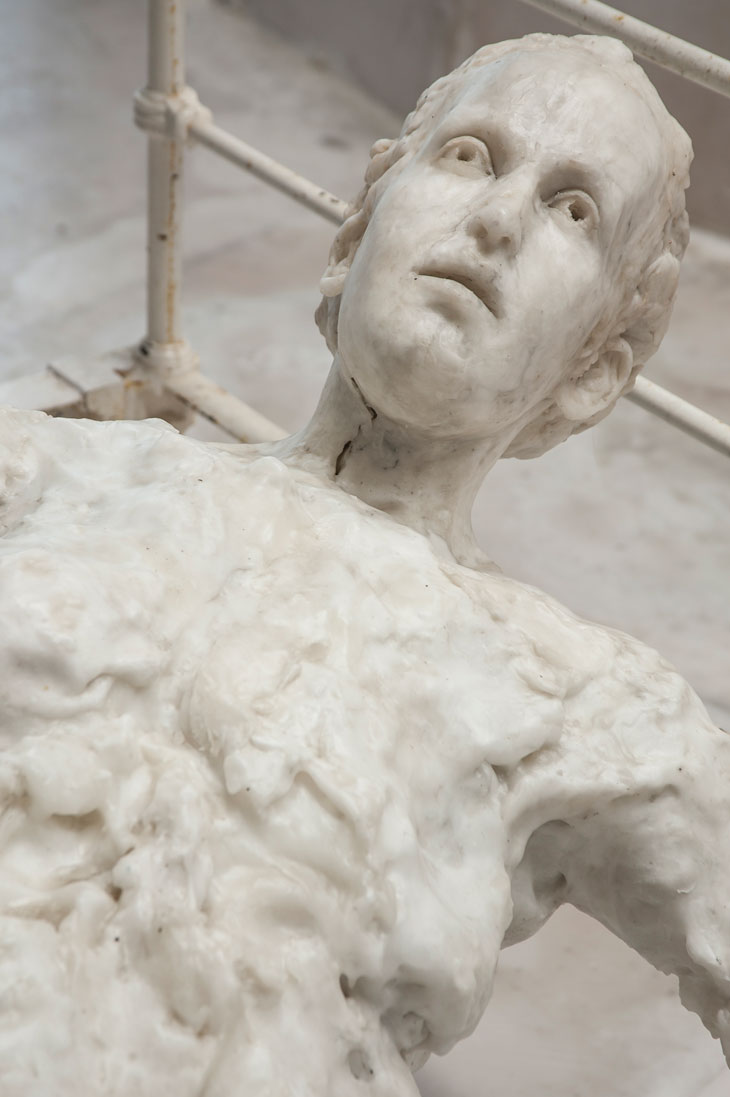
.jpg)
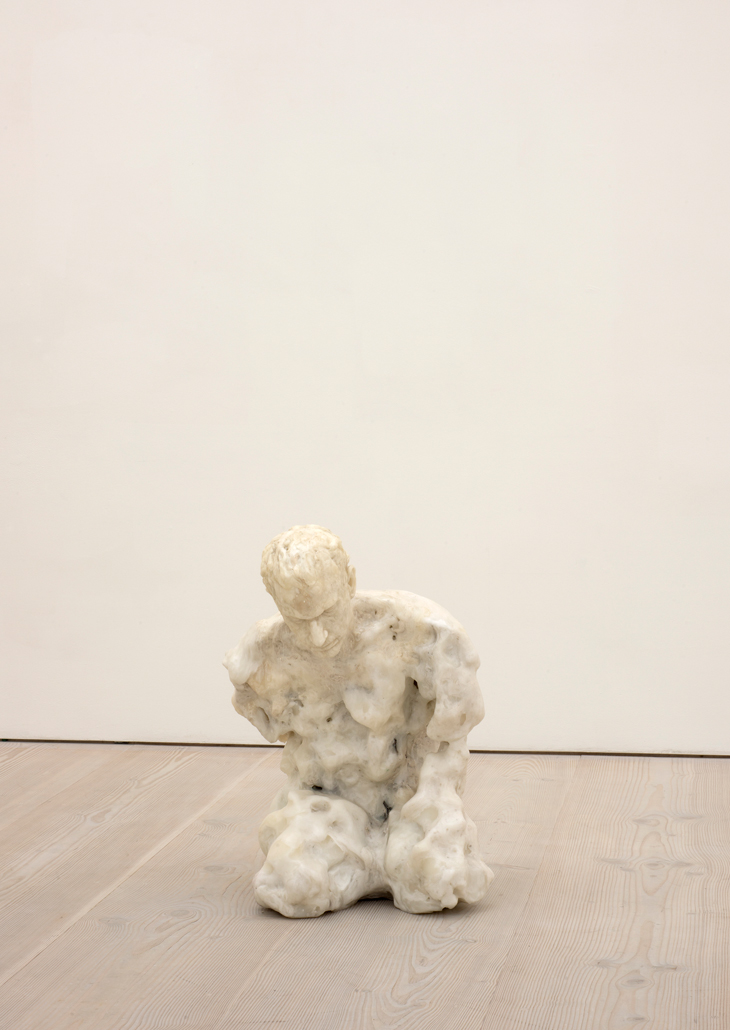

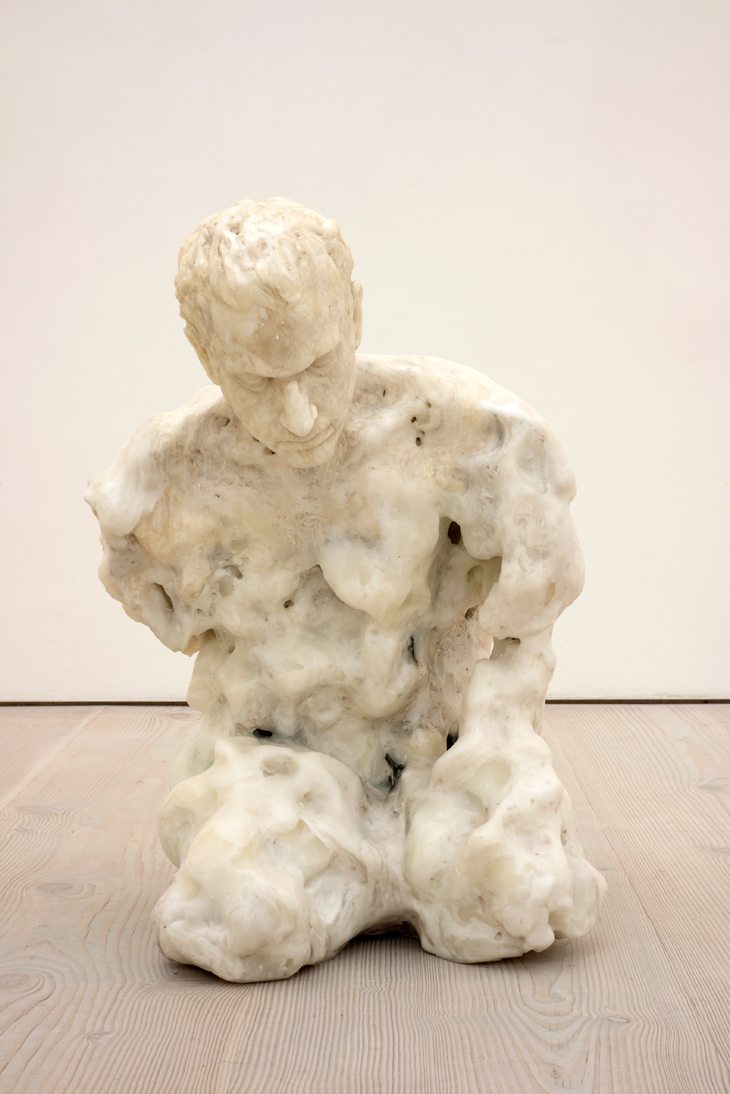
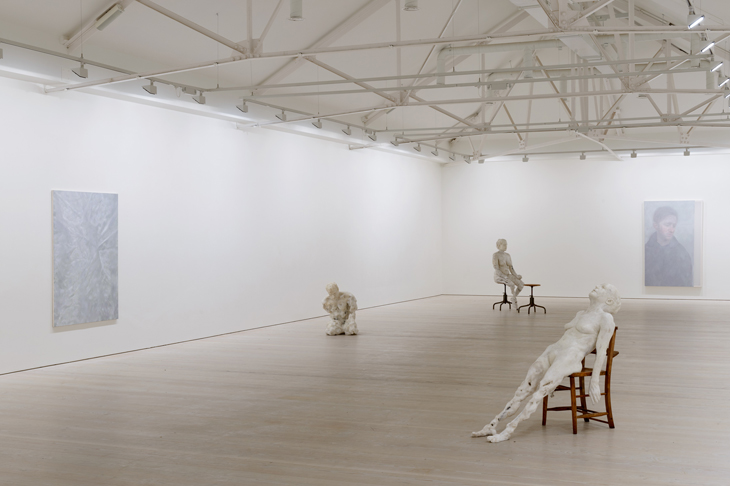
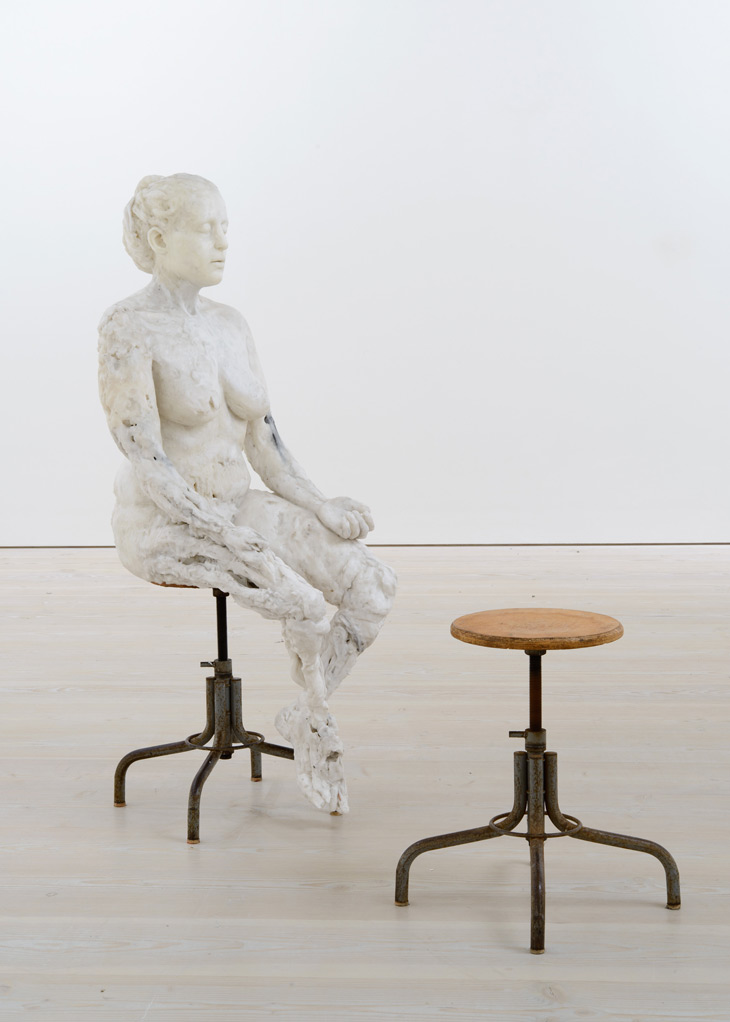
Virgile Ittah
This painstaking attention to the detail of human musculature and fleshy frailty recalls the work of Belgian artist Berlinde de Bruckyere, also in the Saatchi Collection. Her process is however more redolent of another artist she references; like Rodin she works to built up the body, rather than carving into it, creating a strangely shifting form, again speaking to the potential release of the life, and the return to inert matter.
The pale figure, almost melting, bears a particular resonance today in the midst of a migration crisis, in which the bodies of those leaving their home are
mortified at the hands of both smugglers and destination states.
© Natasha Hoare, 2015
Virgile Ittah’s early work, represented here, is a study in the frailty and transience of human flesh. Life-size abject bodies formed of wax people the gallery space, spectral apparitions that seem un-tethered by gravity. These are trapped in some interstitial zone of being, a limbo between life and death, perhaps even at the moment of the last gasp before the soul flees its mortal shell.
In this she states “When I make a sculpture I’m not trying to make a sculpture, I’m trying to make a living human being’, an effect achieved with uncanny results. Each figure variously represents different autobiographical narratives, and areas of research such as the history of female hysteria. The work Untitled (For man would remember each murmur), is based on her own father’s immigrant status as a Jew of Moroccan origin, in the artists own works “It was a curation of my father’s nostalgia for a country that doesn’t exist anymore...There are no more Jews there, no family – nothing.”

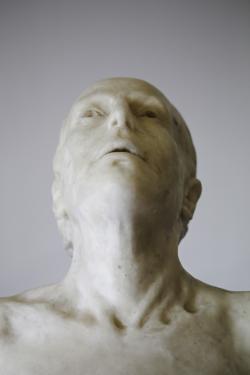
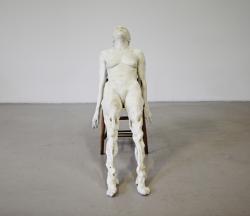






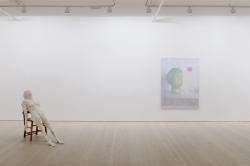


.jpg)

